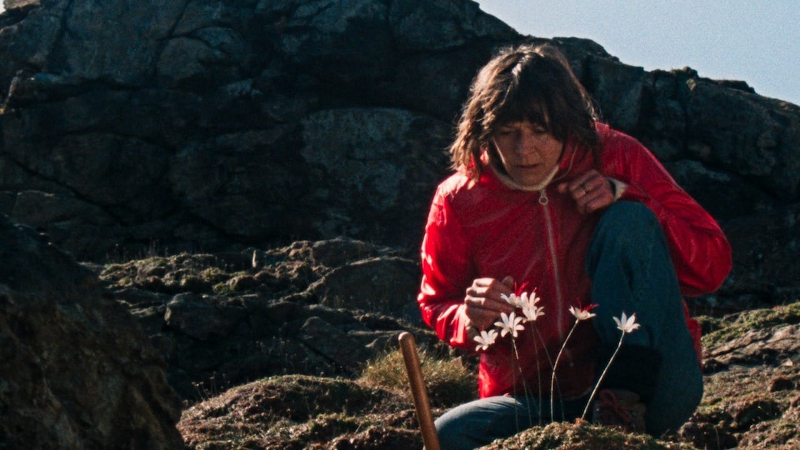Director – Mark Jenkin – 2022 – UK – Cert. 15 – 96m
*****
A lady environmentalist working on an uninhabited island off the Cornish coast becomes subject to powerful, localised forces from the area’s past – out on UK Blu-ray/DVD combi and on BFI Player on Monday, May 8th
NB The title is pronounced “Enys Main”, the eponymous “Men” being as in “menhir”.
A radio receiver. A bird. An island. A woman in a red coat (Mary Woodvine). A flower. Jenkin seems to love the process of putting little bits of film together to make a whole that’s altogether larger than the sum of its constructed parts. If that same process was evident in his earlier, equally Cornish if less fantastical and black and white Bait (2019), his new film is radically different and, moreover, it’s in colour.
Enys Men is being touted as a horror film – presumably with Jenkin’s blessing if the trailer is any indication – but I’m not sure that’s exactly what this film is. Some horror fans may well come away wondering while they bothered, while viewers put off by the term ‘horror’ may well respond positively to Jenkin’s latest – provided they can be persuaded into the cinema to see it.
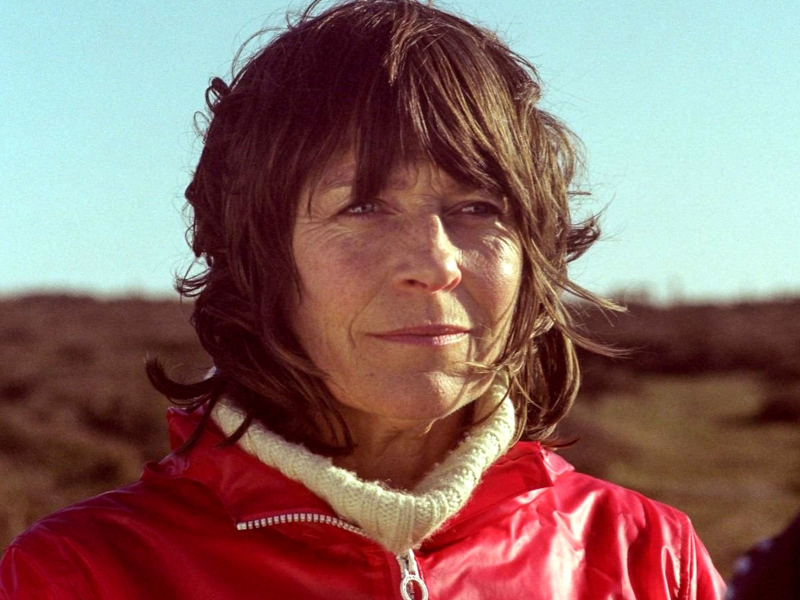
Although he scripts his films, Jenkin seems to be more interested in writing images and sounds than in dialogue (there is hardly any of the latter in this film; there was a lot more in Bait). He builds the character of the red coated woman through a series of observed actions she executes and sights she witnesses – a stick inserted into the ground near a flower; a stone dropped down an ancient well hole or mine shaft to test the depth to the water below; getting the generator started at the house; the insistent, commanding presence of a menhir.
Hers is an isolated existence, punctuated by intermittent calls from the little, two-way radio in her house. She rarely speaks to herself, although she does engage in a verbal dialogue of sorts with her little notebook in which she writes short, daily, one-line sentences about the flower she is monitoring. Since she hardly ever sees anyone else, she has little opportunity to talk to others, although a boatman in gumboots (Edward Rowe) visits occasionally. The house has a deadly history involving a woman jumping from the roof to fall through a plated glass roof below. Women clad in traditional dresses can be seen singing together on the island’s hillsides.
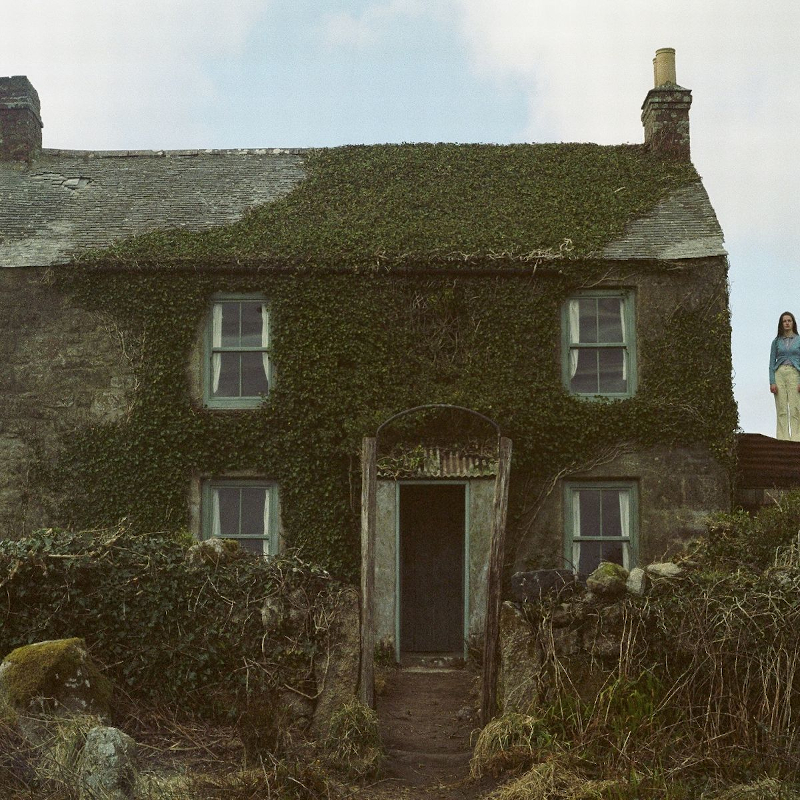
The narrative walks a deft tightrope between everyday reality, memory, dreams and nightmares, the uneasy, keep the audience guessing balance immediately recalling the ghost stories of The Innocents (Jack Clayton, 1961) and The Haunting (Robert Wise, 1963) where you’re never quite sure if there’s really something going on in the real world or if it’s all in the female protagonist’s mind. Even the apparently down to earth moments such as walking through an unpeopled landscape or watching a flower at close quarters could be part of a dream.
Memory and dreams constitute two of the great themes of cinema, a subject about which much already has and much more will be written, something to which the medium is uniquely suited because of the way it at once records the present and constructs an alternate, imagined representation of reality.
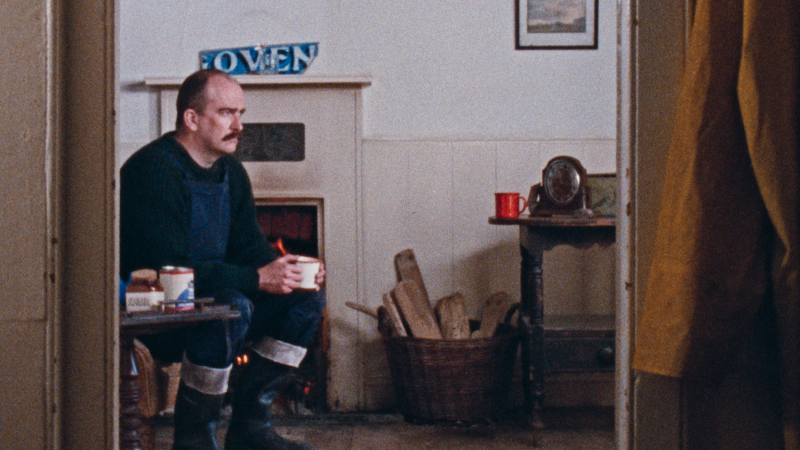
On another, dreamlike, near-subconscious, almost abstract level, the film employs arresting colour imagery and equally inventive noises and sound effects. It was once written of the film Black Narcissus (Michael Powell, Emeric Pressburger, 1947) – I believe in London’s Time Out magazine, although not in the review currently found on their website – that the film could be shown upside down and out of focus and remain utterly compelling because of its use of colour and composition. This is a rare quality, but it’s one that Enys Men likewise possesses.
It also evokes that Australian tale of being subsumed by landscape Picnic At Hanging Rock (Peter Weir, 1975).
Having stated that this may not be a horror film as such, I find myself referencing further films that undeniably fall into that category.
The Wicker Man (Robin Hardy, 1973) mixes regional British folklore and horror, Don’t Look Now (Nic Roeg, 1973) features a little girl in a red coat, and many films of Dario Argento, among them Suspiria (1977), include people, usually women, fatally falling through panes of glass.
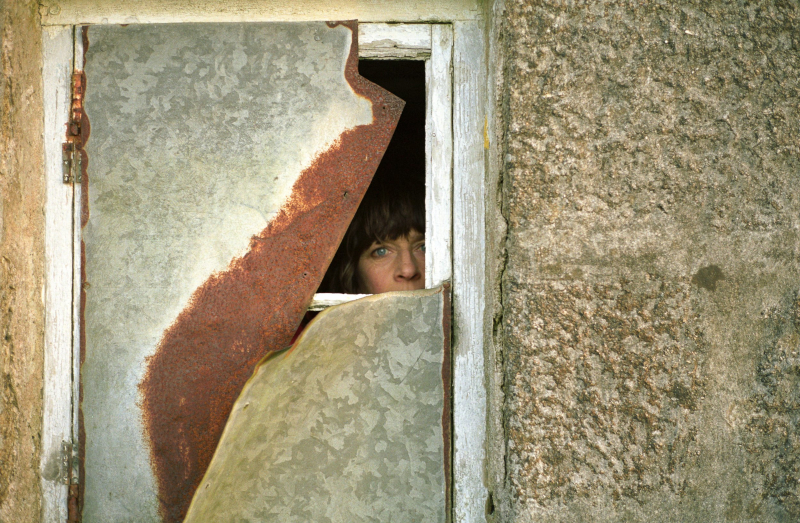
Curiously, Jenkin himself hasn’t chosen any of these titles (or the others I’ve named, aside from his own Bait) in his current BFI Southbank season The Cinematic DNA Of Enys Men, although he does cite Don’t Look Now in his blurb for the “visceral, sensual and overwhelming” Walkabout (Nic Roeg. 1971), again, not obviously a horror genre piece and with its use of Australian landscape could be bracketed alongside Picnic At Hanging Rock.
Other entries in the director’s highly eclectic selection include the Nigel Kneale-scripted for the BBC journey into madness The Stone Tape (Peter Sasdy, 1972), the austere Jeanne Dielman, 23 Quai Du Commerce, 1080 Bruxelles (Chantal Ackerman, 1975) and the nightmarish, jazz-infused Lost Highway (David Lynch, 1997).
Altogether, Enys Men is a remarkable, expressionist, British colour film that resonates via its depiction of a figure isolated in bleak landscape. It cries out to be seen.
Enys Men is out on UK Blu-ray/DVD combi and on BFI Player on Monday, May 8th.
It was previously out in cinemas in the UK on Friday, January 13th.
The BFI Season The Cinematic DNA Of Enys Men runs throughout January at London’s BFI Southbank, and includes the welcome chance to watch a 35mm print of Enys Men as distinct from the standard DCP (Digital Cinema Package) version being widely screened in cinemas (and also showing in this season).
Trailer:
